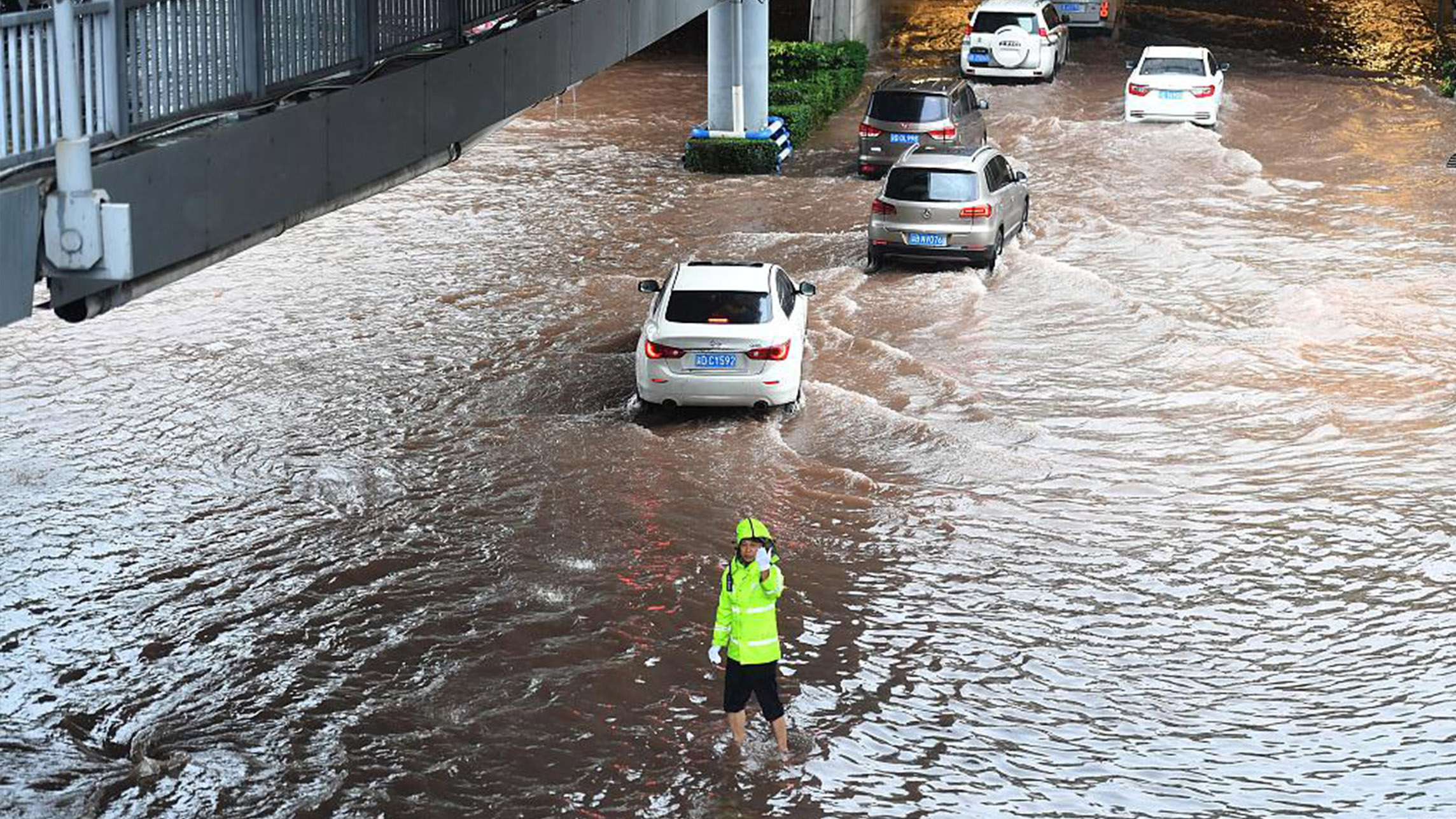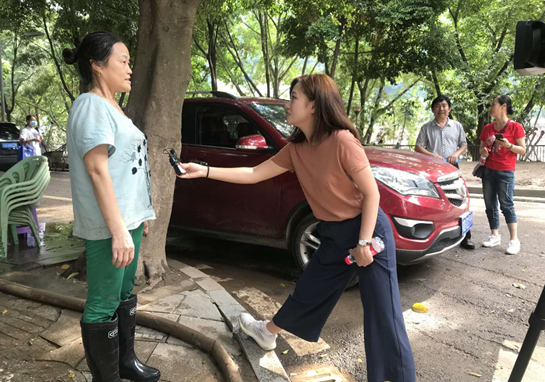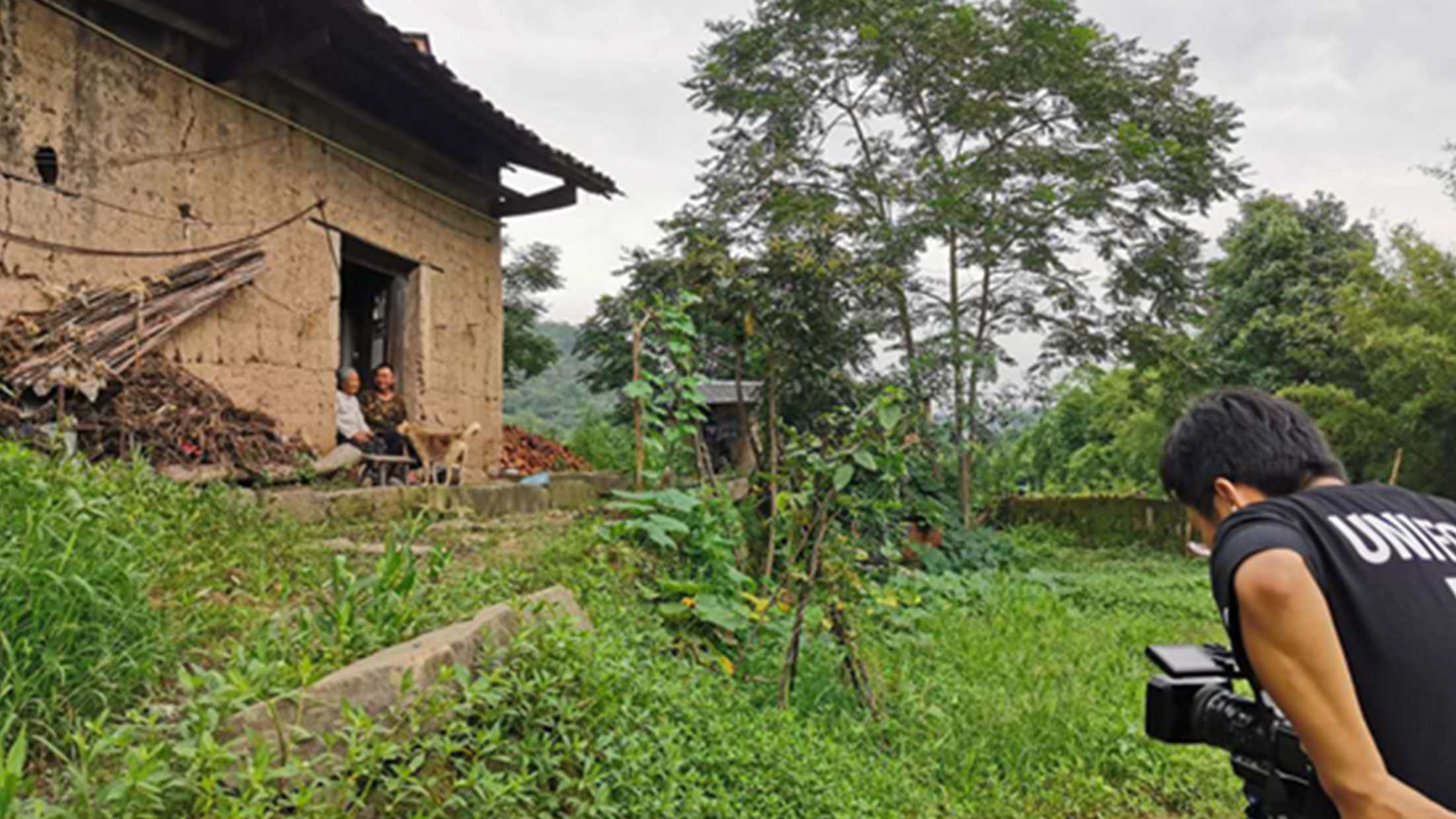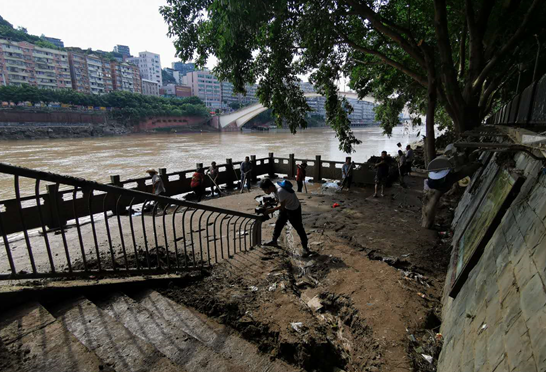02:09

Qijiang District in China's southwest Chongqing municipality is slowly recovering from the two floods it has suffered over the past month.
On June 22, the water level of the Qijiang River rose five meters above the flood line of 222 meters. And on July 1, the water level rose almost two meters above the line.
As of July 1, 38,096 people in the district had been affected by the disaster and more than 50,000 people had been evacuated.
Locals say water levels rose as fast as they receded.
"I was not able to save all my goods in time. Half of them, 100,000 yuan worth of goods, have been affected by the flood. The water was up to my knees before I escaped," said Feng Xun, a sundry goods operator positioned just beside the river.
Meanwhile, at the Xiabeijie Vegetable Market, which is said to be on the lowest-lying areas of the entire Qijiang District, many shops have yet to reopen. For those which have, business has been very slow.
The market is at the same level as the flood warning line – and just two meters below the flood safety threshold.

"The water levels rose so fast we almost thought we wouldn't escape in time!" said Lin Deqin, a store owner just beside Qijiang River. Jiang Zhengfeng/CGTN
"The water levels rose so fast we almost thought we wouldn't escape in time!" said Lin Deqin, a store owner just beside Qijiang River. Jiang Zhengfeng/CGTN
Liu Chenglun, a general store owner, said he lost 150,000 yuan worth of goods because he couldn't save them all in time.
"My shop has been here for as long as the market has been around. The first flood on June 22 was as bad as the one in 1998," he told CGTN.
"I prepared ahead of the second flood on July 1. I booked a storage van for 500 yuan so I could ship out my goods early."
According to Xiong Yong, an urban service specialist at Gunan Street, flood prevention and early-warning drills were organized once the monsoon season began.
"Before the floods hit, we managed to send out timely warnings to vendors so we could reduce the chances of casualties and economic losses," Xiong told CGTN.
02:50

Among those at risk: Villagers' homes
Homes in mountainous villages are at risk given their scattered nature, and many are still made of clay and mud.
"We are not at risk of flooding but we are affected by rain. We had 10 centimeters here," Wang Shiyuan, a brickmaker in Zhutan Village, Zhuantang Town, told CGTN.
"I am out working most of the time and I'm worried about my mother. Her home is liable to collapse in heavy rains. She's 90 this year. I have lived in this house for 60 years and I haven't seen such heavy rain before."
Wang Qide, who's responsible for notifying villagers before a disaster strikes, said if he is unable to get villagers on their mobile phones, he turns up at their homes to tell them to evacuate immediately.
"We also help repair damaged homes after a disaster; and for people with new homes, we help install water and electricity supplies and make sure they're safe," Wang said.
When asked if the floods and damage will affect Zhuantang Town's poverty eradication efforts, party committee member Li Daiyun said it will not, as not many poor households are impacted.
"Also, we have built a long-term mechanism where insurance for damaged crops is provided for poor households," Li said.

Water levels at the Qijiang River rose to levels higher than 1998, locals said. /CGTN
Water levels at the Qijiang River rose to levels higher than 1998, locals said. /CGTN
Early-warning signal crucial
It appears the best defence now is for locals to rely on early-warning signals to evacuate.
"Before a major weather disaster, we will issue a bulletin and forward it to various departments in the district government, on streets, and at high-risk facilities, which will then be forwarded to residents via various messaging platforms," said Zheng Xiuwen, deputy director of the Qijiang Meteorological Station.
"We continue to aim to release a rainstorm warning signal within three to six hours, or even one day in advance, so there is enough time for emergency and rescue work."
Li said the biggest challenge in towns and villages now is with pre-disaster warnings.
"We're worried if water levels rise at night, we might not be able to inform weak and older groups in time," she said.
"We broadcast a warning on the village radio, and send each villager an SMS. And we also teach villagers ways to save themselves and send volunteers to assist people who live on their own without a spouse."
Local authorities in Qijiang have since carried out dredging work to clear debris after the heavy rains on July 1.
Post-disaster disinfection routines have also been carried out. These are all being done with speed in order to resume production and for residents to return to normal life.
Video filmed by Li Yang